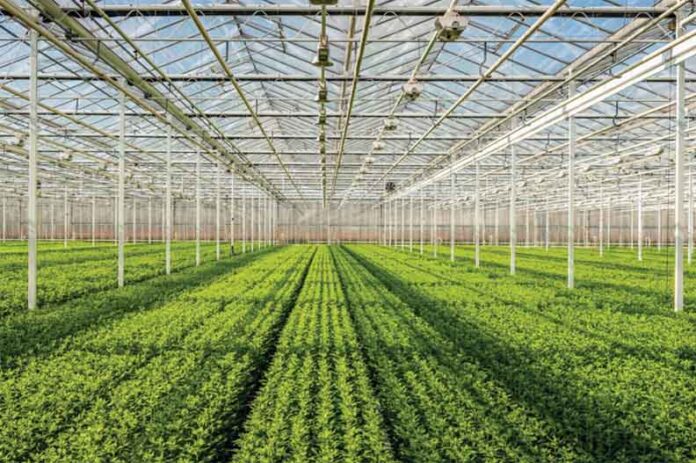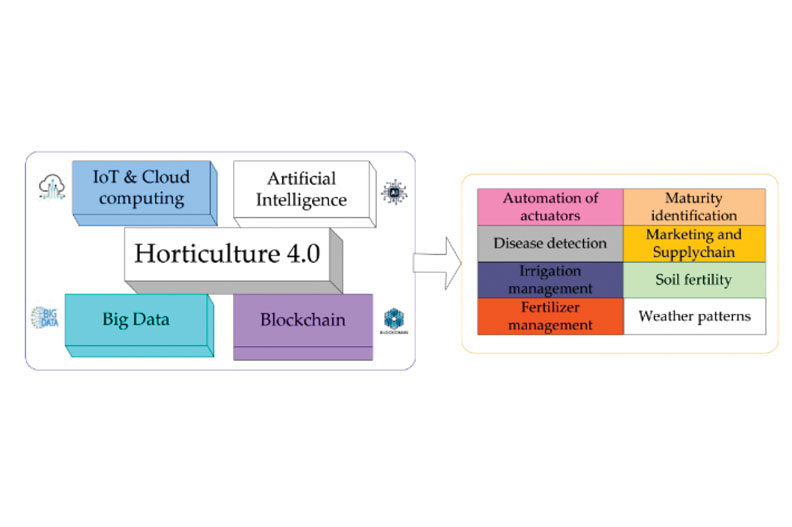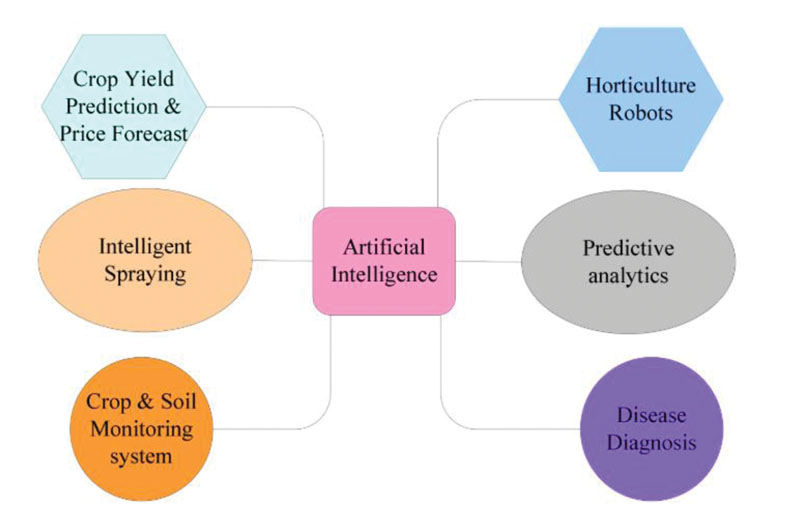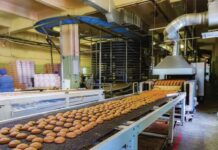
Industry 4.0 and advanced HVAC technology have become essential for horticulture, particularly in cities of tropical climate, where climate fluctuations can pose a significant challenge to maintaining year-round crop production. By allowing farmers to regulate temperature precisely, HVAC systems help extend growing seasons, ensuring optimal conditions for crops even when external weather patterns vary greatly. This means that no matter how hot or cold it gets outside, indoor farms can maintain a consistent climate, fostering continuous crop growth.
In tropical regions, where summers are hot and winters can bring sudden cold snaps, HVAC systems allow indoor farms to avoid the impacts of extreme temperatures. They work by adjusting cooling systems during summer months and providing heating during colder periods to stabilise the environment. This ability to regulate temperatures creates a controlled microclimate, which allows crops to grow unaffected by the harsh external conditions that would typically disrupt outdoor agriculture.
The role of HVAC systems becomes even more crucial during the colder months, particularly in areas like Keller, where temperatures can drop significantly in October. During these months, heating elements within HVAC systems ensure that crops continue growing by maintaining the optimal warmth necessary for plant health. For farmers, this means they can extend their harvest into colder seasons without sacrificing crop quality or yield.
HVAC technology plays an indispensable role in enabling year-round farming. By precisely controlling temperature, especially during seasonal fluctuations, these systems allow urban farmers to maximise crop production while maintaining the ideal growing conditions necessary for healthy plants.
Humidity and Air Quality Management
Controlling humidity is a critical aspect of indoor agriculture, as improper moisture levels can lead to various problems like plant diseases, pest infestations, and mold growth. High humidity encourages the development of mold and mildew, which can spread rapidly and damage crops. Additionally, excess moisture creates an environment conducive to pests, such as fungus gnats, which thrive in overly damp conditions.
On the other hand, low humidity can cause plants to dehydrate, weakening their ability to grow and increasing their susceptibility to diseases. Therefore, managing humidity is essential to maintaining the health and productivity of an indoor farm. Advanced HVAC systems provide precise control over moisture levels, ensuring that plants receive the optimal environment for growth. These systems use dehumidification features to remove excess moisture from the air, preventing mold and disease outbreaks.
Conversely, in drier environments, they can add moisture to maintain the necessary humidity levels. Proper ventilation is also crucial for air quality, as it helps circulate fresh air, reducing the risk of fungal spores and pests from building up in stagnant air pockets. This balance of humidity control and airflow ensures a healthier environment for crops, allowing them to thrive without the threat of moisture-related issues.
In summary, advanced HVAC systems play a vital role in managing both humidity and air quality, which are essential to preventing diseases, pests, and mold in indoor agriculture. By creating a balanced environment, these systems support the overall health and growth of crops, helping farmers maintain high yields and healthy plants.
The Role of Smart HVAC Technology in Horticulture Farms
Horticulture farms, which thrive in densely populated environments, need precision and efficiency to succeed. The rise of smart HVAC technology is revolutionising how these farms operate, allowing farmers to maintain optimal growing conditions with minimal manual intervention. These advanced systems are equipped with sensors that automatically monitor key environmental factors, such as temperature, humidity, and CO2 levels, and adjust them in real time to meet the specific needs of the crops.
Real-Time Adjustments for Optimal Growing Conditions
The most significant advancement in smart HVAC systems is the use of sensors to track environmental data 24/7. These systems respond immediately to changes in conditions, preventing issues before they affect crop health. For example, if humidity levels become too high, smart systems can activate dehumidifiers to prevent mold growth. Similarly, if temperatures drop below optimal ranges, the system will automatically raise the heat, ensuring a stable growing environment. This precision allows urban farms to avoid the fluctuations that can lead to reduced crop quality or yield loss, making smart HVAC systems a cornerstone of modern urban agriculture.
Reduction in Manual Labour and Increased Efficiency
One of the greatest advantages of smart HVAC technology is its ability to reduce the need for manual labour. Traditionally, maintaining an indoor farm requires frequent checks on temperature, humidity, and airflow. With smart systems, these tasks are automated, freeing up farmers to focus on more complex aspects of farming, such as crop management and distribution. The ability to control HVAC systems remotely through apps or cloud-based platforms further increases operational flexibility, allowing farmers to make adjustments on the go. This reduction in labor not only improves efficiency but also lowers the operational costs associated with continuous manual monitoring.
Data-Driven Insights for Better Decision-Making
In addition to automation, smart HVAC systems provide valuable data that can help farmers make informed decisions. By analysing patterns in environmental conditions and crop responses, farmers can fine-tune their processes for better yields. For example, the system may show that slightly lower nighttime temperatures result in faster growth for certain crops, allowing the farmer to adjust settings accordingly. This level of precision is crucial in urban environments, where space is limited, and maximising every square foot is essential for profitability.

Horticulture 4.0
Figure 1 depicts the technologies that can be intervened in horticulture, such as Artificial Intelligence (AI), block chain, big data, the Internet of Things (IoT), and cloud computing, in industry 4.0. Figure 1 illustrates the implementation and application area in which Industry 4.0 can be adopted for horticulture.
In horticulture, there are different stages, including pre-harvesting, harvest, and post-harvest. Industry 4.0 technologies cover the following parameters for horticulture: automation of actuators, disease detection, irrigation management, fertiliser management, maturity identification, marketing and supply chain, soil fertility, and weather patterns.
Along with those applications, Industry 4.0 integration in horticulture enables quality assessment and grading of horticulture products. The quality assessment of horticulture products is different in the three stages. The following are aspects through which the quality and grading of a horticulture product are decided, and they are typical cultivar ripeness, absence of defects and blemishes, a non-harmful number of pesticide residues, freshness, and other chemicals. Therefore, the quality assessment and grading of horticulture products mainly rely on the parameters discussed above. The monitoring of each parameter and utilising the data generated from different wireless sources with Industry 4.0 technologies boost the performance of the horticulture industry for the future.
AI in Horticulture
Fresh and wholesome food is essential for feeding the expanding world population, and greenhouses and indoor agricultural techniques play a crucial role in horticulture farming. The automated detection of pests and diseases in plants empowers the effective monitoring of scalable fruit-and-vegetable crops. The detection of pests and diseases at the right time enhances pest- and disease-management systems.
The AI algorithms can be implemented in horticulture for distinct applications, including fruit detection, pest, disease detection, weed detection, plant-stress detection, and yield prediction through the spectroscopy-and-camera system.
Computer-vision techniques can identify pest- and disease-damaged fruits and provide data to assist in the detection and treatment of diseases and pests in the early stages.

Soil-Organic-Carbon (SOC) monitoring is a crucial characteristic of soil quality because it directly determines soil fertility and enables sustainable soil-nutrient management. To improve SOC prediction, Artificial Neural Networks (ANN), cubist regression, Support-Vector Machines (SVM), Multiple Linear Regression (MLR), and Random Forests (RF) were applied to the data of soil-nutrient indicators, total catchment area, and the topographic-wetness index.
Automatic detection of plant pests and diseases can aid in the monitoring of large farms and gardens. The application of AI as shown in Figure 2 in the drying process of fruits and vegetables has received a lot of attention – because it can generate better-dried fruit-and-vegetable products when combined with an efficient physical field. An IoT-based tool can determine whether a climacteric fruit has been artificially ripened or not.
Energy Efficiency and Sustainability
Smart HVAC systems are designed not only to optimise crop growth but also to be energy efficient. By using real-time data, these systems ensure that only the necessary energy is used to maintain optimal conditions. This reduces energy waste and lowers utility bills, making horticulture farms more sustainable.
Additionally, energy recovery features, such as capturing excess heat from lights or machinery, can further reduce energy consumption, making these systems an eco-friendly choice for farmers aiming to minimise their environmental impact. The integration of smart HVAC technology in urban farms is transforming the industry by reducing manual labour, enhancing efficiency, and providing precise environmental control. These systems enable horticulture farmers to grow high-quality crops year-round while optimising resource use and improving sustainability. As horticulture farming continues to expand, adopting smart HVAC technology will be crucial to its success.
The Future of HVAC in Horticulture Farming
The future of HVAC systems in horticulture farming will be shaped by groundbreaking innovations, especially in automation and energy-efficient designs. As horticulture agriculture expands, these advancements will play a pivotal role in creating sustainable and highly productive farming environments. Key trends include smart automation, which will allow systems to adjust temperature, humidity, and airflow with minimal human intervention.
Additionally, energy-efficient technologies, like energy recovery systems and the integration of renewable energy sources, will reduce the environmental footprint of urban farms. These changes will help urban farming scale up while minimising operational costs and enhancing sustainability.
Increased Automation
Future HVAC systems will increasingly rely on automation, with smart sensors and AI technologies becoming standard. These systems will automatically adjust temperature, humidity, and airflow in real time, responding to crop needs and external conditions without human intervention. This will reduce labour costs and increase the precision of climate control, ensuring that crops receive the exact conditions they need to thrive.
Energy-Efficient Designs
With the growing emphasis on sustainability, future HVAC designs will focus heavily on energy efficiency. Innovations like energy recovery systems will capture and repurpose heat generated by LED lighting and other equipment, significantly reducing energy consumption. Additionally, advanced systems will incorporate renewable energy sources, such as solar power, to further lower the environmental impact of urban farms. These advancements will not only improve operational efficiency but also help urban agriculture become eco-friendlier and more cost-effective.
Impact on Horticulture Agriculture
These advancements will revolutionise urban farming by making it more scalable and sustainable. Automated, energy-efficient HVAC systems will allow for larger farms with reduced operational costs, enabling farmers to grow fresh produce year-round.
As cities continue to embrace indoor agriculture, these innovations will be essential for meeting the food demands of growing urban populations.
The future of HVAC in urban farming will be shaped by increased automation and energy efficiency, fostering a sustainable and highly productive agricultural model.
Conclusions
Horticulture is the field of cultivation of fruits and vegetables. It ensures production and consumption by minimising malnutrition in the current scenario. Recently, use of advanced HVAC technologies has delivered the ability of digitalisation and realise the Sustainable Development Goals (SDGs).
The significance of application of advanced HVAC technologies – such as the Internet of Things, cloud computing, artificial intelligence, block chain, and big data – for horticulture is to enhance traditional practices of disease detection, irrigation management, fertiliser management, maturity identification, marketing, and supply chain, soil fertility, and weather patterns at pre-harvest, harvest, and post-harvest.

Dr. (Prof.) D.B. Jani received Ph.D. in Thermal Science (Mechanical Engineering) from Indian Institute of Technology (IIT) Roorkee. Currently he is a recognized Ph.D. Supervisor at Gujarat Technological University (GTU). He has published more than 250 Research Articles in reputed International Conferences and Journals. He has also published 10 reputed books and book chapters in the area of thermal engineering. He is an Academic Editor for the Journal of Materials Science Research and Reviews. Presently, he is an Associate Professor at GEC, Bhavnagar, Gujarat Technological University, GTU, Ahmedabad (Education Department, State of Gujarat, India). His area of research is Desiccant Cooling, ANN, TRNSYS, and Exergy.








